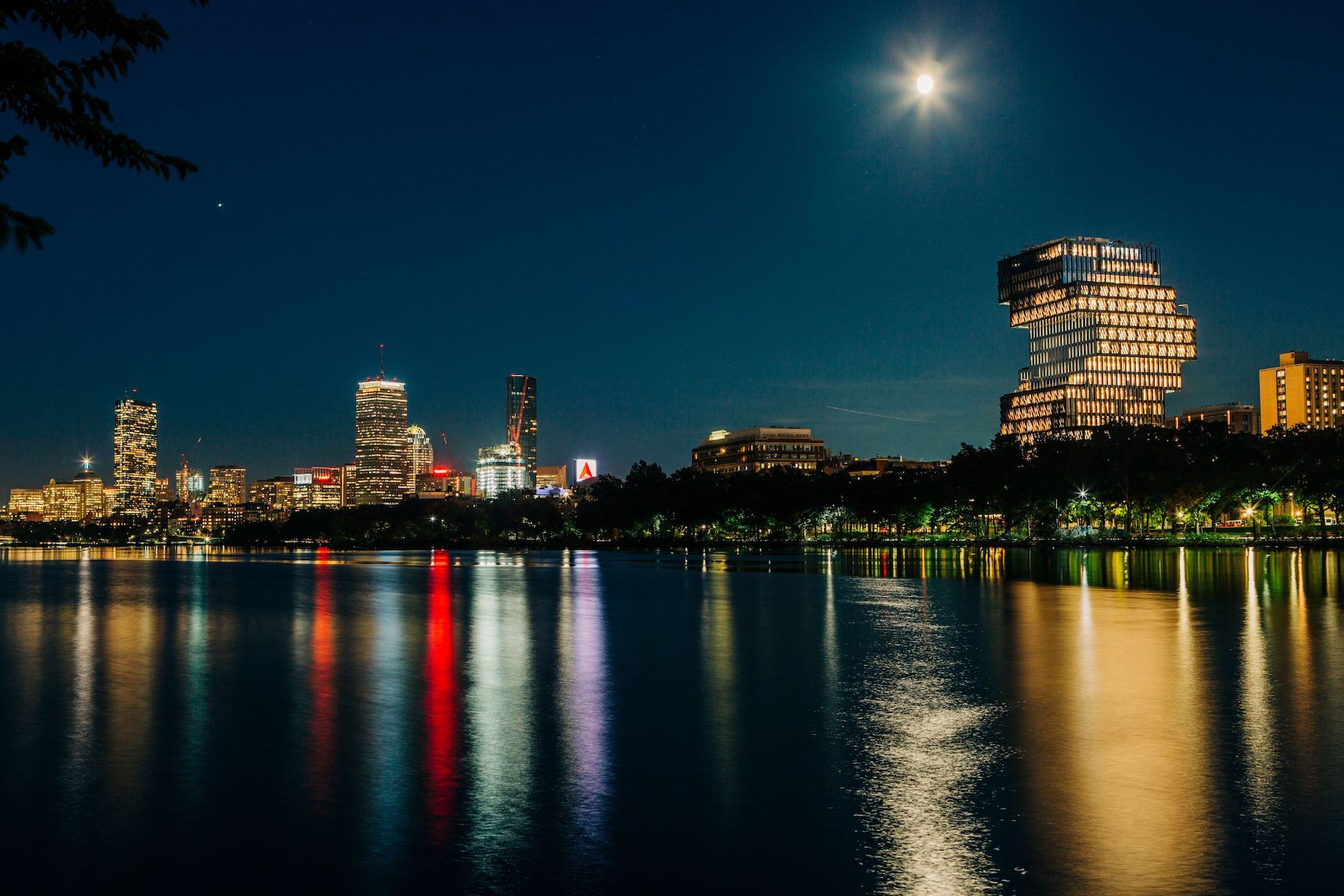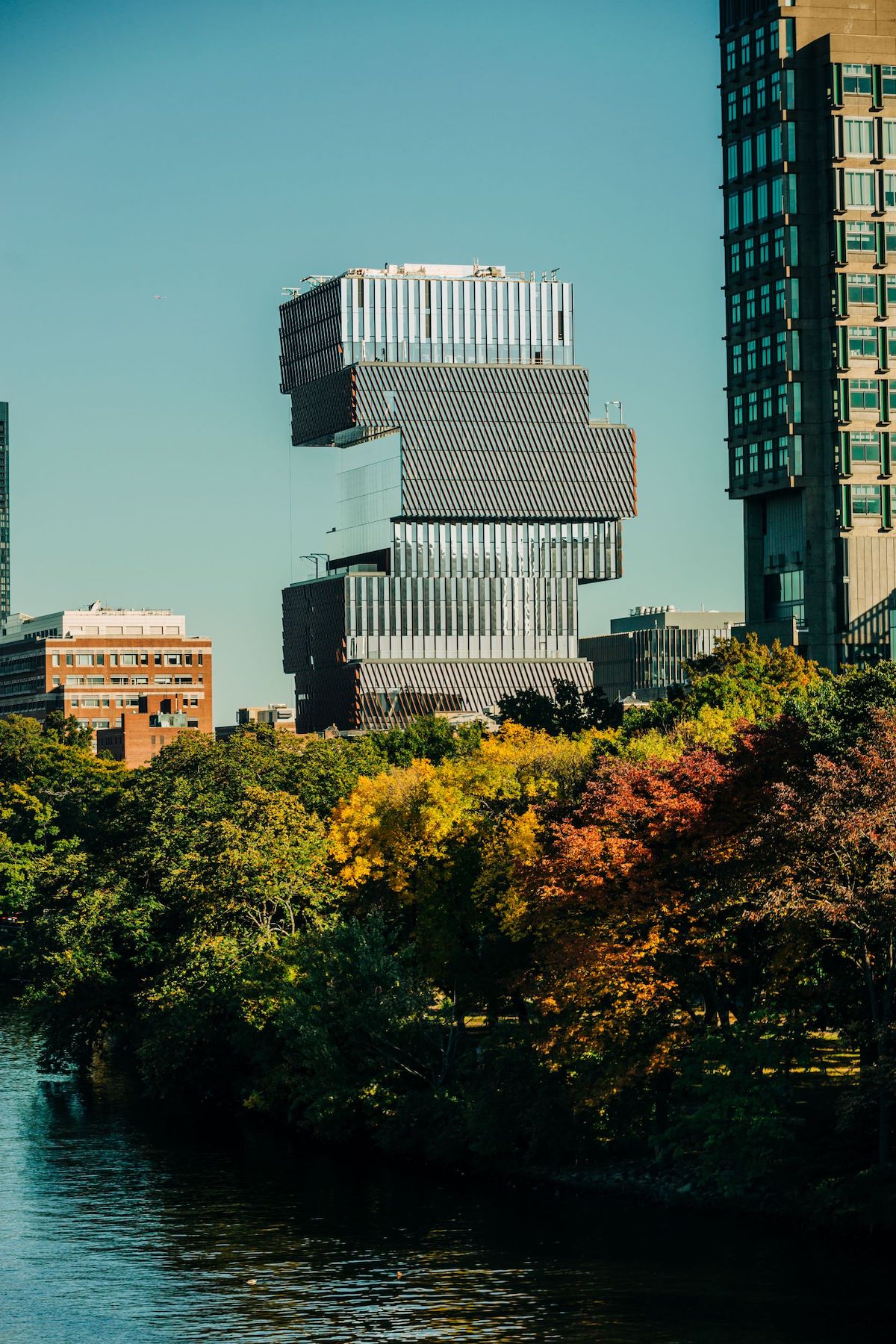The Boston University Center for Computing & Data Sciences has opened on the college's Charles River campus as one of the most sustainable and energy efficient buildings in Massachusetts.
The GC and construction management firm Suffolk, which is headquartered in Boston, delivered this 19-story 345,000-sf building, which is 100 percent fossil-fuel free as a result of the installation of a geothermal system with 31 bores, each about 1,500 ft deep into the earth, that harness thermal resources for heating and cooling the building.
The installation of this system puts BU at the vanguard of Carbon Free Boston, the city’s 2050 carbon neutrality goal. Other energy saving features in the building include triple-glazed windows, staircases that reduce elevator usage, and terraces and green roofs.
Designed by Toronto-based KPMB Architects, the Center will house the university’s newly created faculty of computer and data sciences, its Mathematics and Statistics department, its computer science programs, the BU Spark! Technology incubator, and the Rafik B. Hariri Institute for Computing and Computational Science & Engineering.
“We are in a data-driven revolution, and Boston University is committed to leading in this revolution,” said BU President Robert A. Brown.

The facility itself is designed with intellectual collaboration in mind, featuring an all-glass interior that creates transparency and invites light deep into the building. The unique design of the structure, which is composed of a series of floorplates shifted and cantilevered around the building’s central core, creates a vertically stacked and staggered layout of “neighborhoods” for each academic discipline.
Departments occupy 12 floors that sit atop a five-story podium. There are also two mechanical floors. Blocks of two-to-three floors are slightly off-center from the block below them, and give the building the appearance of being a giant stack of books. Its glass-and-steel exterior are designed to reflect natural light dramatically but also limit direct sunlight from entering the interior spaces. The building “calls attention to itself,” said Luigi LaRocca, KPMB’s founding principal and project manager, in an interview with BU Today.
The $305 million Center was built on a university-owned parcel that was formerly a parking lot and, before that, a Burger King.
Related Stories
| Jun 1, 2012
New BD+C University Course on Insulated Metal Panels available
By completing this course, you earn 1.0 HSW/SD AIA Learning Units.
| May 29, 2012
Reconstruction Awards Entry Information
Download a PDF of the Entry Information at the bottom of this page.
| May 24, 2012
2012 Reconstruction Awards Entry Form
Download a PDF of the Entry Form at the bottom of this page.
| May 3, 2012
U of Michigan team looking to create highly efficient building envelope designs
The system combines the use of sensors, novel construction materials, and utility control software in an effort to create technology capable of reducing a building’s carbon footprint.
| Jan 21, 2011
Sustainable history center exhibits Fort Ticonderoga’s storied past
Fort Ticonderoga, in Ticonderoga, N.Y., along Lake Champlain, dates to 1755 and was the site of battles in the French and Indian War and the American Revolution. The new $20.8 million, 15,000-sf Deborah Clarke Mars Education Center pays homage to the French magasin du Roi (the King’s warehouse) at the fort.
| Nov 3, 2010
Sailing center sets course for energy efficiency, sustainability
The Milwaukee (Wis.) Community Sailing Center’s new facility on Lake Michigan counts a geothermal heating and cooling system among its sustainable features. The facility was designed for the nonprofit instructional sailing organization with energy efficiency and low operating costs in mind.
| Sep 13, 2010
World's busiest land port also to be its greenest
A larger, more efficient, and supergreen border crossing facility is planned for the San Ysidro (Calif.) Port of Entry to better handle the more than 100,000 people who cross the U.S.-Mexico border there each day.
| Sep 13, 2010
Triple-LEED for Engineering Firm's HQ
With more than 250 LEED projects in the works, Enermodal Engineering is Canada's most prolific green building consulting firm. In 2007, with the firm outgrowing its home office in Kitchener, Ont., the decision was made go all out with a new green building. The goal: triple Platinum for New Construction, Commercial Interiors, and Existing Buildings: O&M.
| Aug 11, 2010
CHPS debuts high-performance building products database
The Collaborative for High Performance Schools (CHPS) made a new tool available to product manufacturers to help customers identify building products that contribute to sustainable, healthy, built environments. The tool is an online, searchable database where manufacturers can list products that have met certain environmental or health standards ranging from recycled content to materials that contribute to improved indoor air quality.
| Aug 11, 2010
29 Great Solutions for the AEC Industry
AEC firms are hotbeds of invention and innovation to meet client needs in today's highly competitive environment. The editors of Building Design+Construction are pleased to present 29 "Great Solutions" to some of the most complex problems and issues facing Building Teams today. Our solutions cover eight key areas: Design, BIM + IT, Collaboration, Healthcare, Products, Technology, Business Management, and Green Building.











